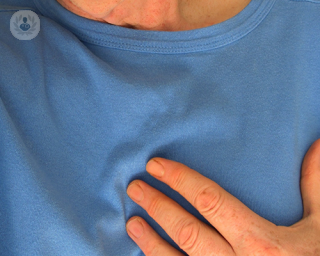Микрососудистая стенокардия
What is microvascular angina?
Microvascular angina is a type of chest pain caused from abnormalities found in the small arteries of the heart. It is often called small vessel heart disease or coronary microvascular disease.
The larger arteries can become narrower or blocked because of fat build-up, known as atherosclerosis. Damage to the small vessels can also limit the amount of oxygen-rich blood to the heart. These problems or damages with the small blood vessels can be hard for a physician to detect using a traditional coronary angiogram so other tests, such as an MRI scan are often used instead.
Microvascular angina is also linked to serious heart problems, such as heart attacks and heart failure.
Symptoms
The symptoms vary from person to person and patients often report having good and bad days, weeks or months. The pain is usually unpredictable and can appear at any time.
The main symptoms are:
- Pain in the chest
- Discomfort in your left arm, neck, jaw and back
- Shortness of breath
- Feeling tired
- Lack of energy
Causes
The exact cause of microvascular angina is not completely understood and can be hard to identify. Some possible causes can be:
- Spasm of the small blood vessels
- High cholesterol or high blood pressure
- Obesity or diabetes
- Increased pain sensitivity
- An issue with the lining cells of the small blood vessels causing them to deliver less blood than needed to the heart
Who does it affect?
Microvascular angina can affect both men and women, but is much more common in women above the age of 50.
Those who smoke, have a high blood pressure, an unhealthy diet or live an inactive lifestyle are more prone to the condition.
Diagnosis
Usually, your doctor will check the main arteries in your heart, if no problems are found, then you will be tested for microvascular angina.
The test is quite similar to other tests for heart disease and include:
- Stress test with imaging
- Positron emission tomography (PET)
- Coronary angiogram
- CT scan or CT angiography scan
- MRI
Treatment
People with microvascular angina are at the same risk for some of the same outcomes as people with obstructive coronary disease, so the treatment goal is to increase blood flow to the heart.
Anti-angina medications are used to improve symptoms of chest pain. These medications include beta-blockers (to improve blood flow to the heart) and calcium channel blockers (to improve blood flow and reduce blood pressure). Both of these medications help reduce the workload of the heart. Aspirin is sometimes also taken to thin the blood and prevent blood clots.
Some other medications are also effective such as statins which are a group of medications that help lower the level of low-density lipoprotein cholesterol in the blood. Angiotensin-converting enzyme inhibitors are another effective group of drugs that help open the blood vessels and reduce blood pressure.
If you are diagnosed with microvascular angina, it’s important to go to your doctor for regular check-ups. Your doctor will determine what type of medication to take and how often you need to be examined.
What specialist should I see?
A cardiologist treats microvascular angina.









